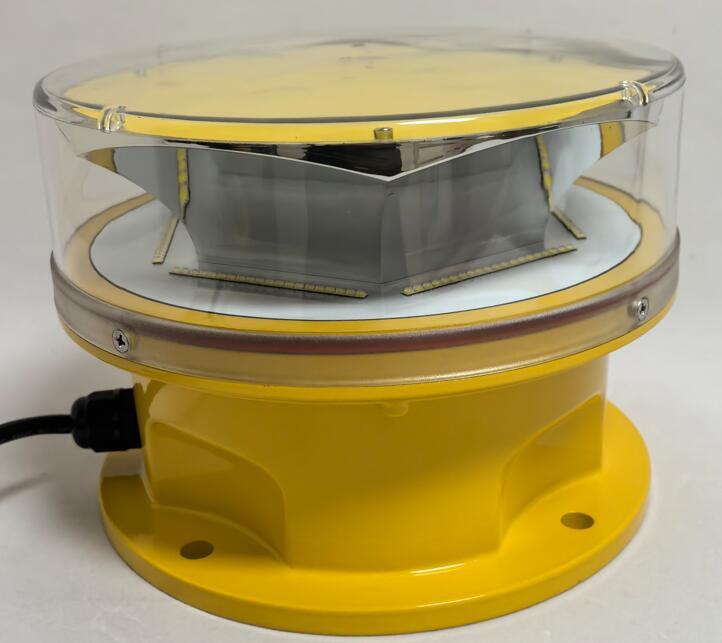Aviation Obstruction Lamp: Ensuring Safety in Skies and Structures
The rapid expansion of urban infrastructure and the increasing number of tall buildings, telecommunication towers, wind turbines, and other elevated structures have made aviation obstruction lamps a critical component of air safety. These specialized lighting systems are designed to alert pilots of potential obstacles, ensuring safe navigation during both day and night operations. This article explores the significance, types, technologies, and regulatory standards of aviation obstruction lamps, emphasizing their role in modern aviation safety.
The Importance of Aviation Obstruction Lamps
Aviation obstruction lamps serve as visual markers for pilots, helping them identify tall structures that could pose collision risks. Without these warning lights, low-visibility conditions—such as fog, heavy rain, or darkness—could lead to catastrophic accidents. The primary objectives of these lamps include:
Preventing Collisions: By marking high-rise structures, they reduce the risk of aircraft impact.
Enhancing Visibility: They ensure that obstacles are detectable from a safe distance.

Compliance with Regulations: Aviation authorities mandate their installation on structures exceeding certain heights.
Types of Aviation Obstruction Lamps
Different structures and environments require specific types of obstruction lighting. The most common classifications include:
| aviation obstruction lamp |
1. Low-Intensity Obstruction Lamps
Used for structures below 45 meters (148 feet) in height.
Typically emit steady red light.
Suitable for buildings, cranes, and small towers in non-congested areas.
2. Medium-Intensity Obstruction Lamps
Required for structures between 45 and 150 meters (148–492 feet).
| aviation obstruction lamps |
Available in Type A (white flashing) and Type B (red flashing/steady).
Commonly installed on telecom towers and mid-rise buildings.
3. High-Intensity Obstruction Lamps
Mandatory for structures exceeding 150 meters (492 feet).
Emit bright white flashes, visible from long distances.
| obstruction lighting |
Essential for skyscrapers, large wind turbines, and major transmission towers.
4. Dual Lighting Systems
Combine red beacons for nighttime and medium/high-intensity white strobes for daytime.
Ensures visibility under all lighting conditions.
Technological Advancements in Aviation Obstruction Lamps
Modern aviation obstruction lamps incorporate advanced technologies to improve efficiency, durability, and energy consumption. Key innovations include:
1. LED Technology
Replacing traditional incandescent and halogen lamps, LEDs offer:
Longer lifespan (up to 100,000 hours).
Lower power consumption.
Higher brightness and reliability.
2. Solar-Powered Systems
Ideal for remote locations without direct power access.
Reduce operational costs and environmental impact.
3. Smart Monitoring Systems
IoT-enabled lamps with remote diagnostics and failure alerts.
Automated brightness adjustment based on ambient light conditions.
4. Synchronized Flashing Systems
Ensures simultaneous flashing across multiple lamps for better visibility.
Reduces pilot confusion in high-obstruction zones.
Regulatory Standards and Compliance
Aviation obstruction lamps must adhere to strict international and national regulations to ensure uniformity and effectiveness. Key standards include:
ICAO (International Civil Aviation Organization): Provides global guidelines for obstruction lighting.
FAA (Federal Aviation Administration) – AC 70/7460-1L: Specifies lighting requirements in the U.S.
CASA (Civil Aviation Safety Authority): Regulates Australian airspace standards.
EASA (European Union Aviation Safety Agency): Oversees European compliance.
These regulations define:
Light intensity and color.
Flash patterns and synchronization.
Installation height and spacing.
Applications of Aviation Obstruction Lamps
Beyond traditional skyscrapers and towers, these lamps are crucial for:
1. Wind Turbines
Tall wind farms require high-intensity lighting to prevent aircraft collisions.
Some systems incorporate radar-activated lighting to minimize light pollution.
2. Telecommunication Towers
Critical for broadcasting and mobile networks, often located in elevated or remote areas.
3. Bridges and Power Lines
High-voltage transmission lines and long-span bridges need obstruction marking.
4. Offshore Structures
Oil rigs and maritime installations use specialized marine-rated obstruction lamps.
Challenges and Future Trends
Despite their effectiveness, aviation obstruction lamps face challenges such as:
Light Pollution: Excessive brightness can affect nearby communities.
Maintenance Difficulties: High-altitude installations require specialized servicing.
Weather Resistance: Lamps must endure extreme temperatures, wind, and corrosion.
Future advancements may include:
AI-Based Adaptive Lighting: Adjusting intensity based on real-time aircraft proximity.
Enhanced Durability: More robust materials for harsh environments.
Eco-Friendly Designs: Further reducing energy consumption and environmental impact.
Aviation obstruction lamp plays an indispensable role in safeguarding air traffic, ensuring that both manned and unmanned aircraft navigate safely around tall structures. With continuous technological improvements and stringent regulatory oversight, these lighting systems will remain a cornerstone of aviation safety. As urbanization and infrastructure development continue, the demand for efficient, reliable, and smart obstruction lighting will only grow, reinforcing their importance in modern aviation.
By adhering to global standards and embracing innovation, the aviation industry can further minimize risks and enhance flight safety for generations to come.
